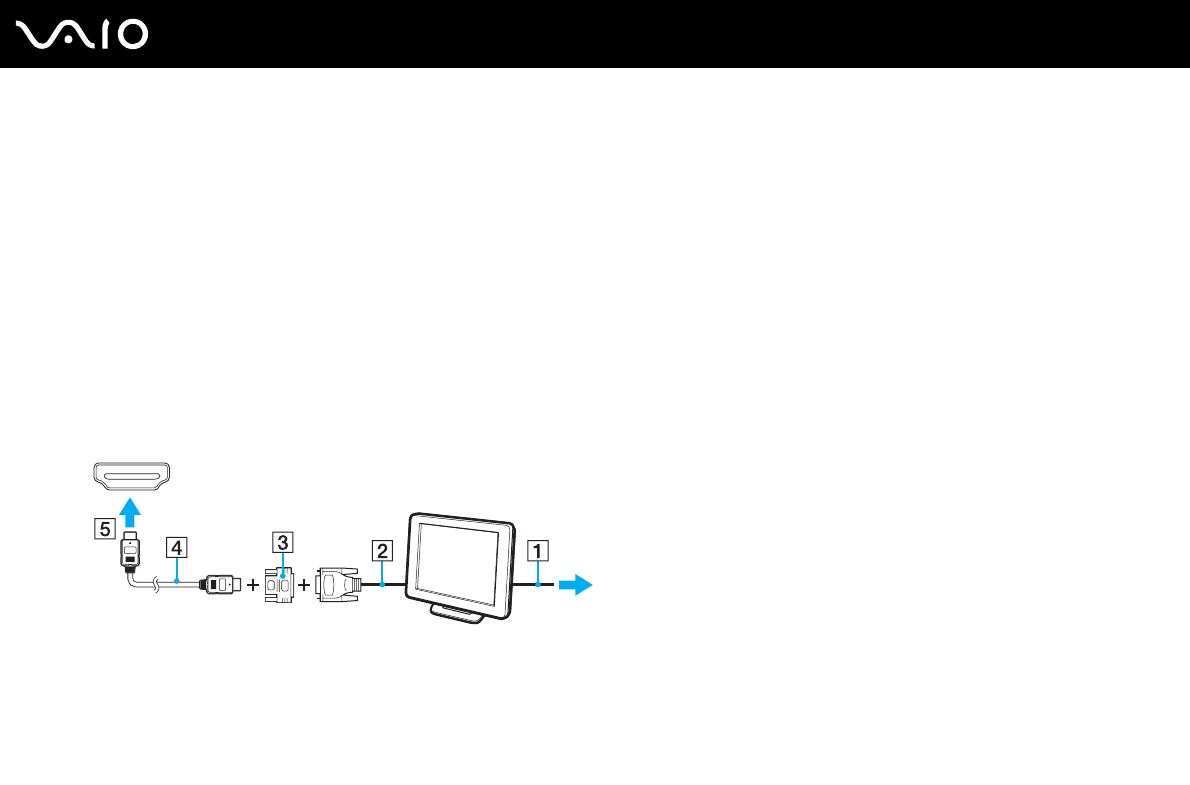
112
nN
Using Peripheral Devices
Connecting a Computer Display
✍
You need to remove the back panel cover from the computer to access the HDMI OUTPUT port. See Removing and Replacing the Back Panel Cover
(page 21) for the procedure.
To connect a computer display
1 If necessary, plug one end of the display's power cord (1) into your display, and the other end into an AC outlet.
2 Plug the display cable (2) (not supplied) to an HDMI to DVI-D adapter (3) (not supplied) and plug one end of the HDMI
cable (4) (not supplied) to the HDMI to DVI-D adapter (3) and the other end to HDMI OUTPUT port (5) on the back of the
computer.
3 If the external computer display is equipped with an HDMI input port, connect one end of an HDMI cable (not supplied)
to the HDMI OUTPUT port on the back of the computer and the other to the HDMI input port on the computer display.
!
Your computer is compliant with the HDCP standard and capable of encrypting the transmission channel of digital video signals for the purpose of
copyright protection, which enables you to play and view a wide variety of copyright protected, high-quality contents. Note that you need to connect an
HDCP-compliant monitor to your computer to view the copyright protected contents. If your computer has a non-compliant monitor connected, you
will not be able to play or view any copyright protected contents.
✍
DVI-D stands for Digital Visual Interface - Digital. It is a type of DVI port that supports only digital video signals (no analog video signals). It has 24 pins.


















